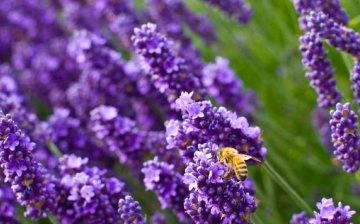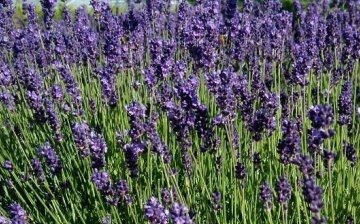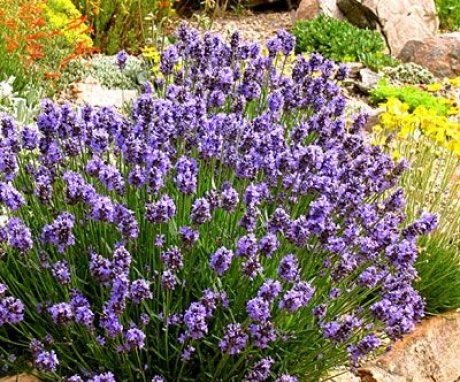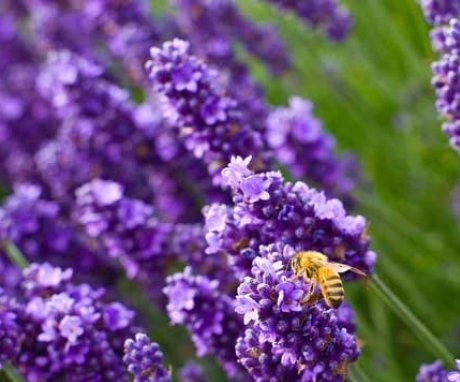Growing and caring for lavender
If you are interested lavender care, then it is generally simple. Having grown this perennial plant, you can enjoy not only its beauty, but also its divine scent. By the way, now you can find lavender with yellow, white or blue flowers.
Content:
Varieties and planting of lavender
Before planting lavender, consider choosing a location for the plants in your garden. It should be open and sunny. After all, lavender is a traditional Mediterranean plant and feels good in conditions close to those where it grows in nature.
The most common varieties you can choose from are:
- Stoechas. Stems are gray-green, leaves are velvety up to 4 cm long, flowers are mauve. The flowering period is long - from early spring to summer;
- Stuhas Anouk. The only variety that blooms throughout spring and all summer. The flower has large petals in the form of butterfly wings. Anuk is the most cold-resistant lavender variety;
- Silver Anouk. The leaves are velvety, silvery gray. Blooms from early spring to mid-summer;
- Angustifolia It is the most common hardy lavender. The leaves are gray-green and the flowers are lilac. Used to make lavender oil;
- Hidcote. Due to its unpretentiousness, it is the most popular variety in horticulture. The leaves are velvety, gray-green, dark purple flowers.
Lavenders prefer alkaline and light neutral soils with good drainage. If on the site the soil clay, then a little gravel and sand must be added to the hole before planting to improve drainage.
Water is poured into the hole, which should be well absorbed. Then a lavender seedling is placed and covered with earth, which is lightly tamped. When planting, you should pay attention to the fact that there are no depressions around the plant in which water can accumulate.
Lavender care and reproduction
One of the benefits of growing lavender is that it is considered a drought tolerant plant. It responds well to potash fertilization. The only thing you should definitely avoid is manure and nitrogen fertilizers. Because of them, the green mass grows profusely, but at the same time the lush flowering practically stops.
Lavender, which includes regular care pruningoften used as a hedge. After flowering, be sure to cut off its fragrant shoots. They need to be dried properly and then used as a moth repellant in the closet. But lavender also needs a "haircut" in order to extend its lifespan. Sometimes a plant dies only because it has not been cut for a long time.
In late summer or early autumn, it is advisable to cut off the ends of the stems, leaving only a part of them no more than 10 cm long. Lavender can also be cut in early spring, removing those parts of the plant that bloomed last year. With regular pruning, the lavender bush has a decorative appearance for several years, after which it must be replaced with a new one.
Breeding methods for lavender
Lavender propagates by seeds, cuttings, layering and division.
Lavender seeds before sowing, it is necessary to bring them out of dormancy (stratify) for one month at a temperature of 0 to +7 degrees, for which in late January - early February they are placed in a refrigerator.
In early March, seeds are sown in a box to a depth of 2-3 mm. Seeds germinate well in good light and temperatures from +18 to +21 degrees.
When the seedlings grow up, they are planted at a distance of 5 cm from each other. The resulting seedlings are planted in a permanent place in May.
Cuttings made from annual lignified shoots. This procedure is best done in April. Cuttings are cut up to 10 cm in size and placed in soil prepared from sand and peat in equal proportions. Cuttings take root under the film. During the first five days, they must be sprayed with water several times a day.
Propagating lavender by layering is one of the easiest ways. The procedure is performed in the spring, for which the desired number of shoots are bent from the bush and placed in a previously prepared groove up to 5 cm deep. The shoots are strengthened, covered with earth and watered.
Throughout the summer, make sure that the soil in the places of the layering is moderately moist. In the spring, the shoot becomes an independent bush and is cut off from the main one.
For the purpose of breeding lavender dividing the bush the plant is pruned in the fall to a height of 10 cm and carefully covered with earth. In the spring, soil is poured, filling the space between the stems. Throughout the summer, such a bush gives rooted shoots. In autumn, a lavender bush is dug up, divided and planted already several plants.
Growing lavender is possible in almost any region; it can also grow at home. True, for this you need to fulfill all the requirements. In summer, the flower pot can be taken out to the balcony, but the plant must be protected from drafts.













